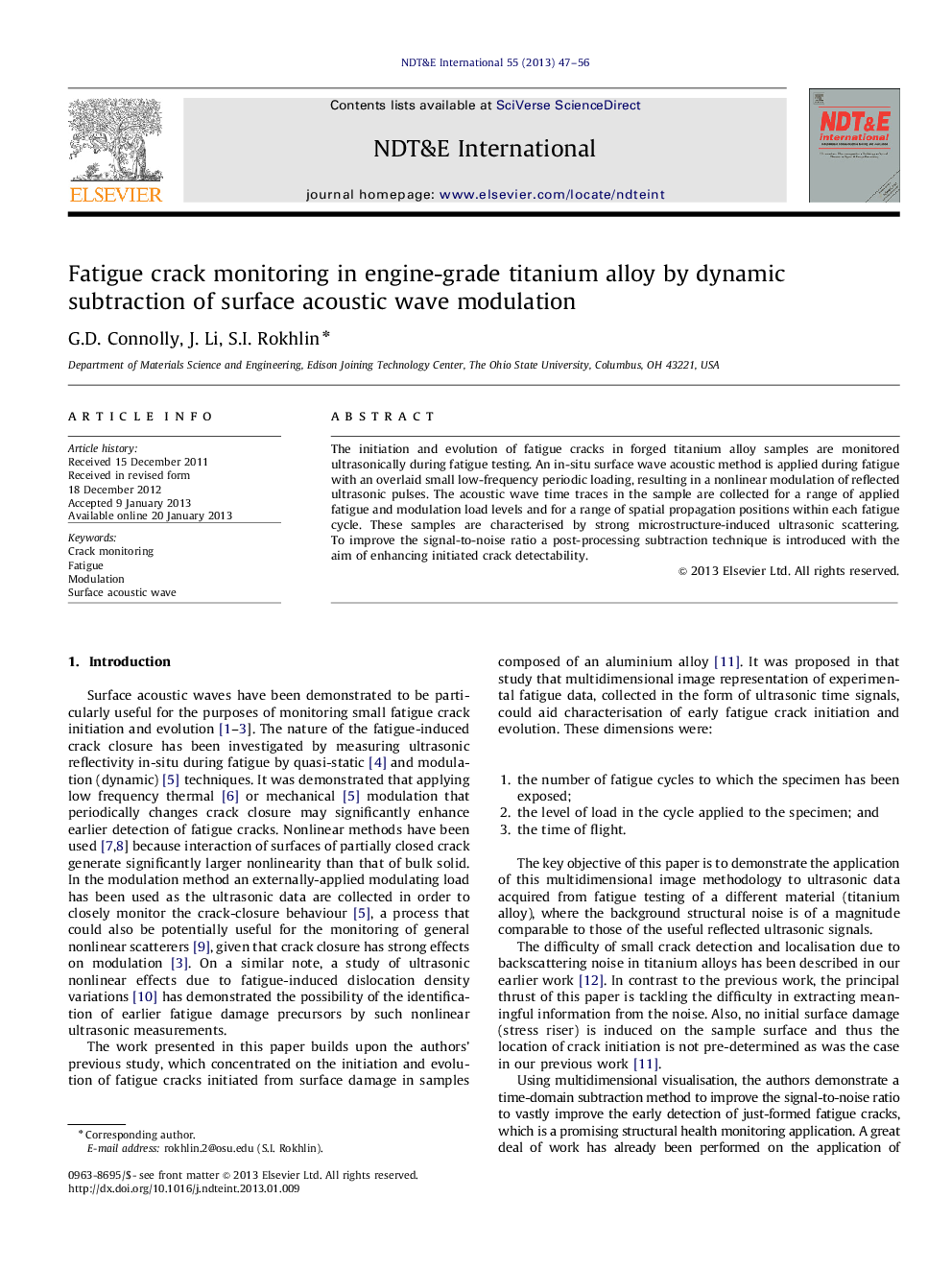| Article ID | Journal | Published Year | Pages | File Type |
|---|---|---|---|---|
| 295182 | NDT & E International | 2013 | 10 Pages |
Abstract
The initiation and evolution of fatigue cracks in forged titanium alloy samples are monitored ultrasonically during fatigue testing. An in-situ surface wave acoustic method is applied during fatigue with an overlaid small low-frequency periodic loading, resulting in a nonlinear modulation of reflected ultrasonic pulses. The acoustic wave time traces in the sample are collected for a range of applied fatigue and modulation load levels and for a range of spatial propagation positions within each fatigue cycle. These samples are characterised by strong microstructure-induced ultrasonic scattering. To improve the signal-to-noise ratio a post-processing subtraction technique is introduced with the aim of enhancing initiated crack detectability.
Related Topics
Physical Sciences and Engineering
Engineering
Civil and Structural Engineering
Authors
G.D. Connolly, J. Li, S.I. Rokhlin,
